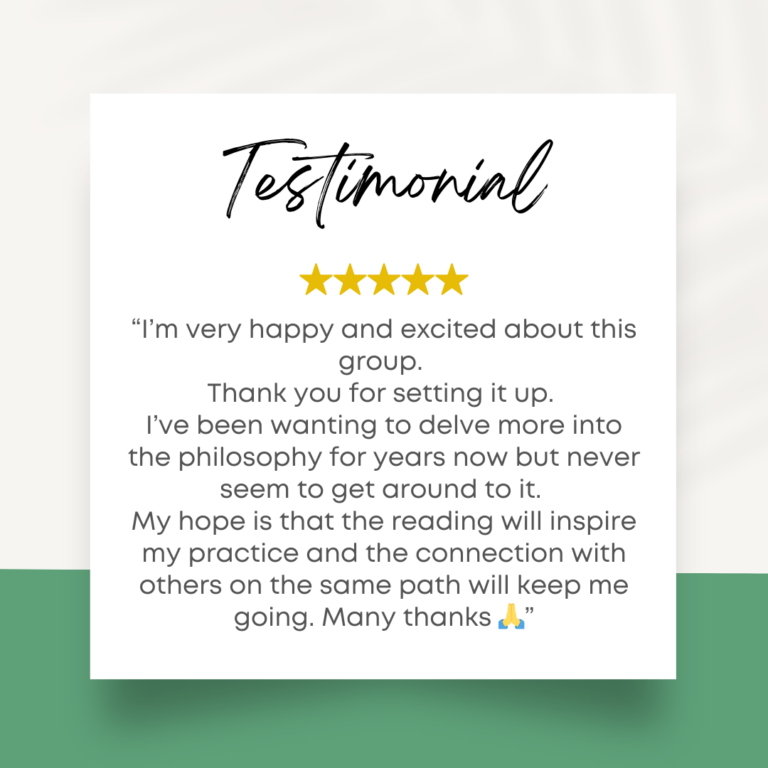
Yoga Readers an online community dedicated to the exploration and discussion of the profound wisdom contained in the works of B.K.S. Iyengar and the Iyengar family. This initiative is designed to engage practitioners worldwide in thought-provoking discussions, gain invaluable insights from diverse perspectives, and delve into the multifaceted aspects of yoga through curated materials and interactive sessions.
Join us and delve into thought-provoking discussions, gain invaluable insights from diverse perspectives, and explore yoga’s multifaceted aspects through curated materials and interactive sessions.
Yoga Readers is committed to disseminating and preserving the authentic tradition of Iyengar Yoga, with its emphasis on alignment, precision, and in-depth understanding of asanas. Yoga Readers aims to create and nurture a worldwide network of Iyengar Yoga practitioners, teachers, and enthusiasts. Our community encourages the exchange of ideas and experiences, enriching the practice for all members. By engaging deeply with the works of B.K.S. Iyengar and the Iyengar family, we ensure the authenticity and continuity of their teachings. Our discussions honor the legacy of Iyengar Yoga and make its profound wisdom accessible to a global audience.
Our community serves as a platform for Iyengar Yoga practitioners to connect, share insights, and foster a sense of belonging. In our fast-paced, digital world, participating in a community that encourages thoughtful discussion and reflection is increasingly valuable. Yoga Readers supports both new and established Iyengar Yoga groups by providing a continuous learning environment. The collaborative nature of our community enhances the collective growth and development of its members.
Our Current Book
Yoga a Gem for Women
This is a groundbreaking work that revolutionized women’s yoga practice. From April through July 2025, we’ll explore this masterpiece that harmoniously blends traditional wisdom with modern understanding of women’s needs.
Through bi-weekly sessions, we’ll delve into Geeta Iyengar’s profound insights gained from decades of teaching women worldwide. We’ll explore yoga philosophy, women’s life cycles, detailed asana techniques, mythological stories, and practical adaptations for different stages of life. Each chapter enriches our understanding of how yoga can be adapted while maintaining its transformative power. This landmark text changed not only how yoga is taught to women but also deepened our understanding of yoga’s therapeutic potential for all practitioners. Join us in uncovering the timeless wisdom of this essential yoga text that continues to shape and influence yoga practice today.
How does it work?
I’ve designed Yoga Readers to operate through a multi-faceted approach to learning and connection. Bi-weekly Zoom sessions serve as our primary gathering point, where we engage in structured discussions focused on specific chapters or themes. These sessions are carefully facilitated to ensure deep understanding of concepts, and recordings are made available for future reference, accommodating our global community across different time zones.
The WhatsApp community forms our daily touchpoint, where members receive regular reading reminders and progress checks. This platform creates a sense of continuous connection and mutual support among practitioners. Our Facebook group complements this with in-depth discussion threads, resource sharing, and community updates, while our YouTube channel houses session recordings and supplementary educational content.
Each book in our reading journey is explored over three to four months, following a carefully structured format that ensures thorough understanding and meaningful engagement. Before each session, members receive detailed reading guidelines and discussion questions for preparation. During sessions, we engage in facilitated discussions that encourage the sharing of experiences and exploration of practical applications. After sessions, comprehensive summaries and key takeaways are shared, along with resources for deeper study.
Yoga Readers offers a structured and supportive learning environment tailored to meet the diverse needs of our members. Our resources include:
- Weekly Reading Reminders. Members receive timely notifications to help members stay on track, via WhatsApp and Facebook.
- Chapter Summaries and Notes. Concise overviews to deepen understanding and clarify complex concepts, via Yoga Readers’ Webpage, WhatsApp and Facebook.
- Reading Prompts and Questions. Thought-provoking guidance for personal reflection and group discussion, via Yoga Readers’ Webpage, WhatsApp and Facebook.
- Live Zoom Meetings. Interactive sessions featuring group discussions, small breakout conversations, and opportunities for shared learning. Recordings of sessions are posted in YouTube and shared through social media platforms.
- Supplementary Resources. Background information on authors, texts, and relevant Sanskrit terminology to enhance comprehension, via Yoga Readers’ Webpage, WhatsApp and Facebook.
- Online Discussion. A platform for asynchronous engagement, where members can ask questions, share reflections, and connect at their convenience, via a private Facebook group.
These tools are carefully designed to accommodate varying learning preferences and time constraints, ensuring meaningful participation for all.
What is the value that members receive?
Yoga Readers represents more than just a book club; it’s a living, breathing community dedicated to the preservation and propagation of Iyengar Yoga’s rich tradition. In our fast-paced, digital world, I’ve created a sanctuary for thoughtful discussion and reflection, supporting both new and established Iyengar Yoga practitioners in their journey of continuous learning and growth. Through our structured study of classical texts, I work to ensure that the profound wisdom of the Iyengar tradition remains vibrant and accessible for generations to come.
What sets Yoga Readers apart is the carefully curated learning journey I create for each reading unit. Every chapter begins with thought-provoking focus questions designed to spark curiosity and deeper contemplation, such as “How does adversity serve as a catalyst for spiritual growth?” or “What makes a teaching tradition authentic and effective?” I enrich our study with specially crafted elements including Yogic Term Spotlights, where we explore Sanskrit terminology like Sadhana or Guru-Shishya Parampara, deepening our connection to yoga’s rich linguistic and philosophical heritage. Through guided reflection questions, I encourage practitioners to connect the teachings directly to their personal practice, while mythological spotlights bring ancient wisdom to life through stories like that of Sulabha and King Janaka’s yoga debate. Each unit includes exploration of key concepts such as the Three Doshas (Vata, Pitta, Kapha), interactive chapter quizzes to reinforce learning, and culminates in an engaging Zoom session. The experience is rounded out with comprehensive unit wrap-ups, session recordings, and newsletters that help maintain continuity and connection within our learning community.
I welcome practitioners who seek to deepen their understanding of Iyengar Yoga through collaborative study and discussion. This community offers a unique opportunity to engage with classical yoga texts while connecting with fellow practitioners worldwide, creating a supportive environment for personal growth and collective learning in the tradition of Iyengar Yoga.

About Agi Wittich
I am a scholar of yoga and a certified Iyengar Yoga teacher with over two decades of dedicated practice and teaching experience. With a Ph.D. in Comparative Religion from the Hebrew University of Jerusalem, focusing on women in Iyengar Yoga, I bridge academic research and practical yoga instruction. My journey includes extensive study at the Ramamani Iyengar Memorial Yoga Institute in Pune, India, and training with renowned international teachers. Currently teaching in Jerusalem and serving as a trauma-informed yoga teacher with NATAL – Israel Trauma and Resiliency Center, I founded Yoga Readers to share the profound wisdom of yogic texts with practitioners worldwide.
By combining my academic background in Indian philosophy and Sanskrit with practical teaching experience, I strive to make the deep wisdom of yoga accessible and meaningful to contemporary practitioners, creating a space where physical practice meets philosophical understanding.
Previous Books
This transformative work moves beyond the physical aspects of yoga to present a comprehensive view of yoga as a life philosophy. Over the next three months, from November through February, we’ll explore this masterpiece through five carefully structured units, from the foundational “Yoga and Life” to the concluding “Yoga in the World.” Through bi-weekly Zoom discussions, we’ll delve into Iyengar’s insights gained from decades of practice and teaching. The book examines the eight limbs of yoga while offering practical guidance for modern life, making it an invaluable resource for practitioners seeking deeper understanding. Our reading journey includes focused study periods for each unit, culminating in group discussions that will help us uncover the multifaceted nature of yoga and its impact on our overall well-being.
Our inaugural book in the Yoga Readers community was “Light on Life” by B.K.S. Iyengar. Building upon his earlier work “Light on Yoga,” which focused on asanas, this book offers a comprehensive view of yoga as a transformative life path. Over several months, we explored Iyengar’s insights from his seven decades of practice, examining how yoga integrates body, mind, consciousness, and emotions. Through this profound work, we discovered how yoga extends far beyond physical practice, offering a path to self-discovery and inner harmony. Our discussions helped us understand yoga’s multidimensional nature and its potential to foster balance and spiritual growth in our daily lives.















